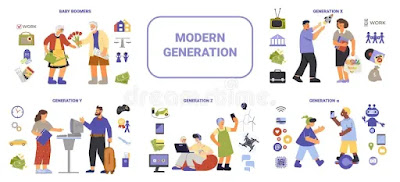In the ever-evolving world of artificial intelligence (AI), a new player has emerged, shaking the foundations of Silicon Valley’s dominance. DeepSeek, a Chinese AI application, has taken the tech world by storm, challenging giants like OpenAI, Google, and Microsoft. With its groundbreaking capabilities and cost-effective development, DeepSeek is not just another AI model—it’s a symbol of China’s growing prowess in technology and a potential game-changer in the global AI race. But what makes DeepSeek so revolutionary? And how is it reshaping the future of AI? Let’s dive in.
The Rise
of DeepSeek: A Chinese AI Marvel
1. What
is DeepSeek?
DeepSeek is
a cutting-edge AI model developed by Chinese engineers, designed to compete
with global AI leaders like OpenAI’s ChatGPT. What sets DeepSeek apart is
its cost efficiency and innovative approach. While
Open AI spent 600 million developing ChatGPT, DeepSeek achieved similar capabilities for just 6 million. This remarkable feat has not only stunned the tech world
but also raised questions about the future of AI development.
2. The
Mastermind Behind DeepSeek
The brain
behind DeepSeek is Liang Wenfeng, an information and electronic
engineer based in Hangzhou, China. Liang’s vision was to create an AI model
that could rival Western counterparts without relying on expensive, high-end
chips like Nvidia’s A100. By combining low-cost chips with
innovative engineering, Liang successfully launched DeepSeek, positioning it as
a formidable competitor in the AI space.
How
DeepSeek is Disrupting the AI Industry
1.
Cost-Effective Development
DeepSeek’s
most striking feature is its low development cost. While OpenAI and
other Western companies invest billions in AI research, DeepSeek has proven
that high-quality AI models can be built at a fraction of the cost. This has
forced Silicon Valley to rethink its strategies and consider more efficient
approaches to AI development.
2.
Challenging Nvidia’s Dominance
DeepSeek’s
launch had a significant impact on Nvidia, the leading producer of AI chips. On
the day DeepSeek was released, Nvidia’s stock value dropped by 17%,
resulting in a $600 billion loss. This highlights how DeepSeek’s
innovative use of low-cost chips is disrupting the traditional AI hardware
market.
3. Global
Reactions and Bans
Despite its
success, DeepSeek has faced bans in several countries, including
South Korea, Italy, and Australia. Concerns over data privacy and security have
led governments to restrict its use, especially on official devices. However,
DeepSeek’s developers argue that their data storage practices comply with
international standards, and they are working to address these concerns.
DeepSeek
vs. ChatGPT: A Comparative Analysis
1.
Language Proficiency
DeepSeek
excels in Mandarin and other Asian languages, giving it a
competitive edge in regions where ChatGPT’s presence is limited. This
linguistic versatility makes DeepSeek a preferred choice for users in China and
neighboring countries.
2.
Accuracy and Reliability
One of
ChatGPT’s limitations is its tendency to produce AI hallucinations—incorrect
or misleading answers. DeepSeek, on the other hand, claims to provide more
accurate and reliable responses, especially for complex queries. This has
earned it praise from developers and researchers worldwide.
3.
Open-Source Potential
DeepSeek is
exploring the possibility of adopting an open-source model, similar
to Meta’s LLaMA series. This would allow developers to customize the AI for
specific needs, further enhancing its appeal and versatility.
The
Geopolitical Implications of DeepSeek
1.
China’s AI Ambitions
DeepSeek is
more than just a technological achievement—it’s a strategic tool in
China’s quest to challenge the United States’ dominance in AI. By developing a
world-class AI model at a fraction of the cost, China has demonstrated its
ability to innovate and compete on the global stage.
2. The
US-China Tech War
The rise of
DeepSeek has intensified the US-China tech rivalry. With the US
imposing restrictions on chip exports to China, DeepSeek’s success highlights
China’s resilience and adaptability. Experts believe that this competition will
drive further innovation in the AI sector, benefiting users worldwide.
3. A New
Era of AI Competition
DeepSeek’s
emergence marks the beginning of a new era in AI competition. No
longer is OpenAI the sole leader in the field. With DeepSeek and other models
entering the market, the AI landscape is becoming more diverse and dynamic,
paving the way for groundbreaking advancements.
The
Future of DeepSeek and AI
1.
Expanding Global Reach
Despite
facing bans in some countries, DeepSeek is working to address privacy concerns
and expand its global reach. By tailoring its privacy policies to meet local
regulations, DeepSeek aims to regain trust and establish itself as a reliable
AI provider.
2.
Driving Innovation
DeepSeek’s
success has inspired other companies to explore cost-effective AI development
methods. This shift could lead to a more inclusive and accessible AI
ecosystem, where innovation is not limited by financial constraints.
3.
Ethical Considerations
As AI
continues to evolve, ethical concerns remain a top priority. DeepSeek’s
developers are committed to ensuring that their technology is used responsibly,
addressing issues like data privacy, misinformation, and job displacement.
Conclusion
DeepSeek is
more than just a technological marvel—it’s a symbol of China’s growing
influence in the global AI race. By challenging Silicon Valley’s dominance and
offering a cost-effective alternative, DeepSeek has reshaped the future of AI.
While it faces challenges, including privacy concerns and geopolitical
tensions, its potential to drive innovation and competition is undeniable. As
the AI landscape continues to evolve, DeepSeek stands as a testament to the
power of ingenuity and determination in the face of adversity.
Discover how
DeepSeek, the Chinese AI marvel, is challenging Silicon Valley’s dominance with
its cost-effective and innovative approach. Learn about its impact on the
global AI race and what the future holds.
References
1.
Liang Wenfeng, Founder of DeepSeek.
2.
MIT Technology Review on AI chip usage.
3.
Reports from South Korea’s Data Protection Agency.
4.
Comparative analysis of DeepSeek and ChatGPT.
5.
Expert opinions from AI researchers and geopolitical
analysts.














